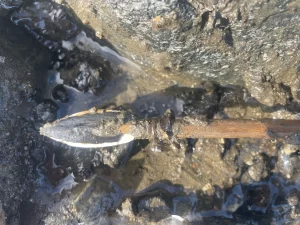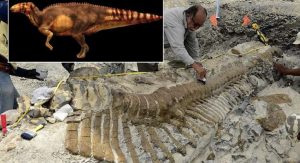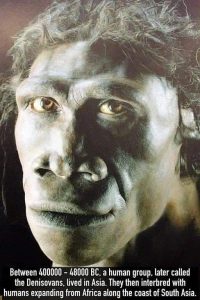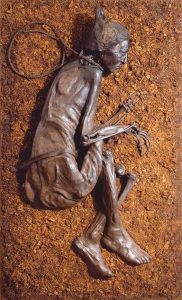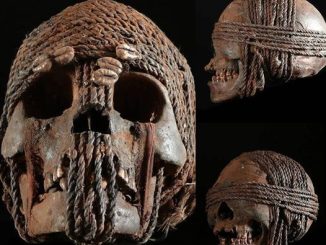The ‘unusually well-preserved’ five yard-long tail was the first ever found in Mexico, said Francisco Aguilar, director of the country’s National Institute for Anthropology and History.
The team, made up of archaeologists and students from INAH and the National Autonomous University of Mexico, identified the fossil as a hadrosaur, or duck-billed dinosaur.
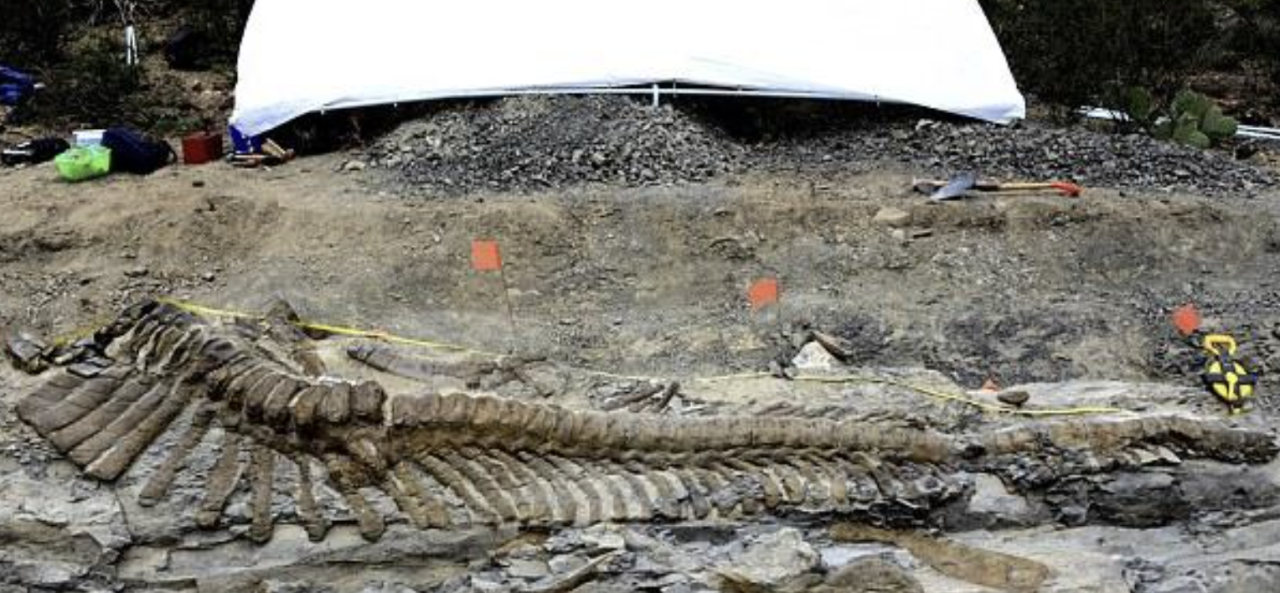
Relic: The researchers found the ancient dinosaur tail in Coahuila State in Mexico

The ‘unusually well-preserved’ five yard-long tail was the first ever found in Mexico. It is 72 million years old
The tail, found near the small town of General Cepeda found in the border state of Coahuila, likely made up half the dinosaur’s length, Aguilar said.
Archaeologists found the 50 vertebrae of the tail completely intact after spending 20 days in the desert slowly lifting a sedimentary rock covering the creature’s bones.
Strewn around the tail were other fossilised bones, including one of the dinosaur’s hips, INAH said.

Precision: Archaeologists painstakingly excavate the tail
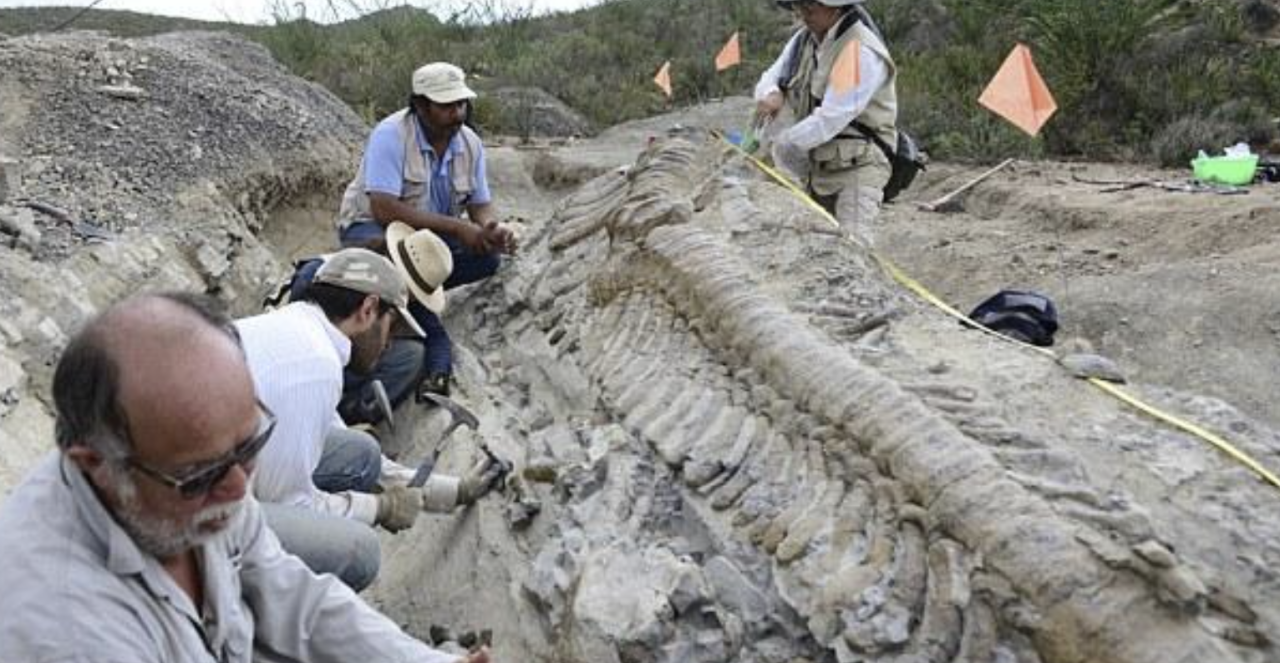
Speaker for the dead: The tail, from a hadrosaur, will enable experts to learn about bone conditions that affected the colossal beasts

Despite Mexico’s rich heritage in paleontology, this is the first dinosaur tail found in the country
Strewn around the tail were other fossilised bones, including one of the dinosaur’s hips
THE DUCK-BILLED DINOSAUR
The hadrosaurs are known as the duck-billed dinosaurs due to the similarity of their head to that of modern ducks.
The whole front of the skull was flat and broadened out to form a beak, which was ideal for clipping leaves and twigs from the forests of Asia, Europe and North America.
However, the back of the mouth contained thousands of teeth suitable for grinding food before it was swallowed.
Hadrosaurs likely grazed on horsetails and vegetation close to the ground, rather than browsing higher-growing leaves and twigs.
Dinosaur tail finds are relatively rare, according to INAH.
The new discovery could further understanding of the hadrosaur family and aid research on diseases that afflicted dinosaur bones, which resembled those of humans, Aguilar said.
Scientists have already determined that dinosaurs suffered from tumors and arthritis, for example.
Dinosaur remains have been found in many parts of the state of Coahuila, in addition to Mexico’s other northern desert states.
‘We have a very rich history of paleontology,’ Aguilar said.
He noted that during the Cretaceous period, which ended about 65 million years ago, much of what is now central northern Mexico was on the coast.
This has enabled researchers to unearth remains of both marine and land-based dinosaurs.
The presence of the remains was reported to INAH by locals in June 2012. After initial inspections, excavation began earlier this month. The remains of the tail will be transferred to General Cepeda for cleaning and further investigation.
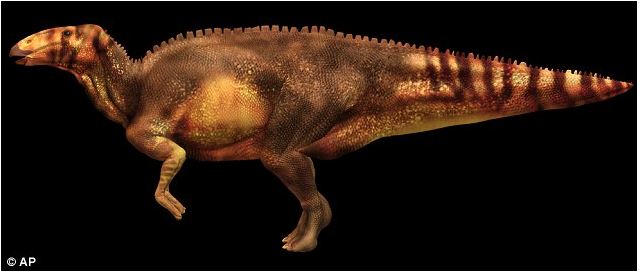
An artist rendering provided by the National Geographic Society shows what a hadrosaur is believed to have looked like. Most dinosaur groups, except hadrosaurs and ceratopsians, were in decline for the last 40 million years of the Cretaceous
